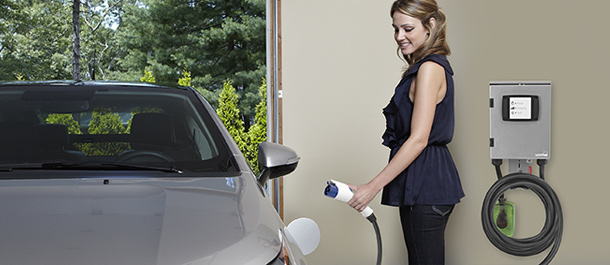What you need to know before purchasing a new EV charging station

With over 250,000 electric vehicles on the road today and about 100 different types of electric vehicle charging stations available, you might be confused when trying to decide which charging station to purchase. Having choices is good for consumers, but can be baffling. Our hope is to lift the fog and make sure you ask the right questions in your search for a charging station.
Well, let’s first start with learning the terms. Most Industry insiders call charging stations EVSEs or electric vehicle supply equipment. You can impress your friends by telling them you are looking for a new EVSE.
Most EV drivers will find that their electric vehicles have a Level 1 cord set, trickle or travel charger in the trunk of their car. As an example I have one in my Prius Plug-In. The only challenge with the trickle chargers is that it may take up to 40 hours if you have a battery electric vehicle. These types of chargers are convenient, as they should work with any 120 Volt outlet…but who has the time to wait that long? Just make sure you have a dedicated circuit or outlet otherwise your breaker could trip.
More and more consumers are buying Level 2 EVSEs, which are 208 to 240 volts and can be anywhere from 3.3 to 20kW of power. It is important to understand how much power your vehicle can accept. Most first generation EV’s have a 3.3kW on board charger. We are seeing second and third generation vehicles with larger on-board chargers from 6.6 to up to 20kW. We have recommended consumers to “future-proof” in selecting the size of their charging station. Keep in mind that there are losses in your vehicle battery management system, as much as 400 Watts. These parasitic losses can be attributed to the vehicle power electronics, DC/DC converter, inverters etc. So you are best off buying at least a 4.8kW EVSE for your 3.3kW on board charger or a 7.7kW EVSE for your 6.6kW on board charger.
Some EV charging stations are indoor only and others are outdoor rated and can be mounted on a wall, bollard or pole. This maybe important based on where you are installing your EVSE. One other area of interest is electric vehicle cable length. Some EVSEs offer 12 feet of cable, while others can go up to 25 feet. I say go big or go home! EVSE manufacturers stop at 25 feet so they meet the National Electric Code. According to Article 625 of the National Electric Code you will need special cable management if you are greater than 2 5 feet.
Another area of interest is EV cable gauge. I know some EVSE manufacturers are taking short cuts and using smaller gauge wire on their EVSEs. This has led to some overheating and melting issue.
The other major important question to ask the EVSE manufacturer is, which automaker is using your EVSE? If your EVSE is in the dealership or recommended by a major automaker you know it meets very stringent requirements. This includes agency and extreme testing and compliance with the vehicle. I know several EVSEs and EVs are not compatible. Why take the risk? Also, the automakers usually pick one EVSE manufacturer and test to ensure there are no electromagnetic interference issues. Kind of important if you have a TV antenna (what is that?) or a pace maker…oh no!
Lastly, you should look into the EVSE agency listing. A reputable EVSE manufacturer will go to a Nationally Recognized Testing Laboratory (NRTL). The most stringent, in my humble opinion is Underwriter’s Laboratory. Unfortunately there are number of companies selling their product on several major online retailers with non-UL listings, old standards or not standards at all. At the end of the day, you want something safe that your family can use that won’t damage your home or your car.
We hope this helps…happy charging!


